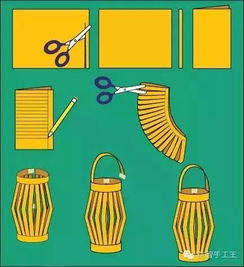Creating artistic lanterns is not just a craft; it's an art form that combines traditional craftsmanship with creative expression. The Chinese art of lanternmaking, especially as exemplified by the craftsmanship of Zhongguo Yishu, or the Chinese Art Group, is renowned worldwide for its intricacy and beauty. This teaching plan aims to provide a structured approach to teaching the art of crafting artistic lanterns, covering everything from materials and tools to techniques and artistic concepts.

Explore the history and cultural significance of lantern making in Chinese tradition.
Discuss the evolution of lanterns from simple functional objects to intricate works of art.
Introduce various types of lanterns, including traditional and contemporary designs.
Highlight regional variations and unique characteristics.
Identify traditional materials used in lantern making, such as bamboo, paper, and silk.
Discuss their properties and significance in the craft.
Explore modern alternatives and enhancements to traditional materials.
Discuss the advantages and limitations of using modern materials.
Introduce basic tools required for lantern making, such as scissors, glue, and brushes.
Discuss specialized tools for specific techniques, such as cutting and shaping bamboo strips.
Teach the technique of constructing a bamboo framework for the lantern.
Emphasize precision and symmetry in bamboo cutting and bending.
Demonstrate traditional Chinese paper cutting techniques for decorative patterns.
Guide students in pasting paper cutouts onto the lantern frame.
Introduce painting techniques for adding color and detail to the lantern.
Explore various decorative elements such as tassels, ribbons, and beads.
Discuss the importance of symmetry and balance in lantern design.
Teach techniques for achieving visual harmony in lantern composition.
Explore symbolic motifs commonly used in lantern decoration.
Encourage students to imbue their designs with personal meaning and symbolism.
Foster creativity by encouraging students to experiment with unconventional materials and techniques.
Emphasize the value of innovation while respecting traditional craftsmanship.
Guide students in constructing a simple traditional lantern using bamboo and paper.
Emphasize fundamental techniques such as frame assembly and paper pasting.
Assign exercises focused on practicing decorative techniques such as painting and paper cutting.
Encourage students to explore different motifs and styles.
Challenge advanced students with complex lantern designs that incorporate multiple techniques and materials.
Provide individualized guidance and feedback to support students' creative exploration.
Arrange field trips to museums or cultural exhibitions showcasing traditional lanterns.
Invite guest speakers, such as master craftsmen or scholars, to share insights into the cultural significance of lantern making.
Facilitate group discussions on the cultural, artistic, and personal significance of lantern making.
Encourage students to reflect on their own cultural heritage and artistic influences.
Crafting artistic lanterns is not only a practical skill but also a means of artistic expression and cultural preservation. By following this comprehensive teaching plan, students can gain a deeper understanding of the art of lantern making while honing their craftsmanship and creative vision. Through exploration, experimentation, and reflection, they can create lanterns that not only illuminate spaces but also illuminate hearts and minds with beauty and meaning.
版权声明:本文为 “四季百科网” 原创文章,转载请附上原文出处链接及本声明;

